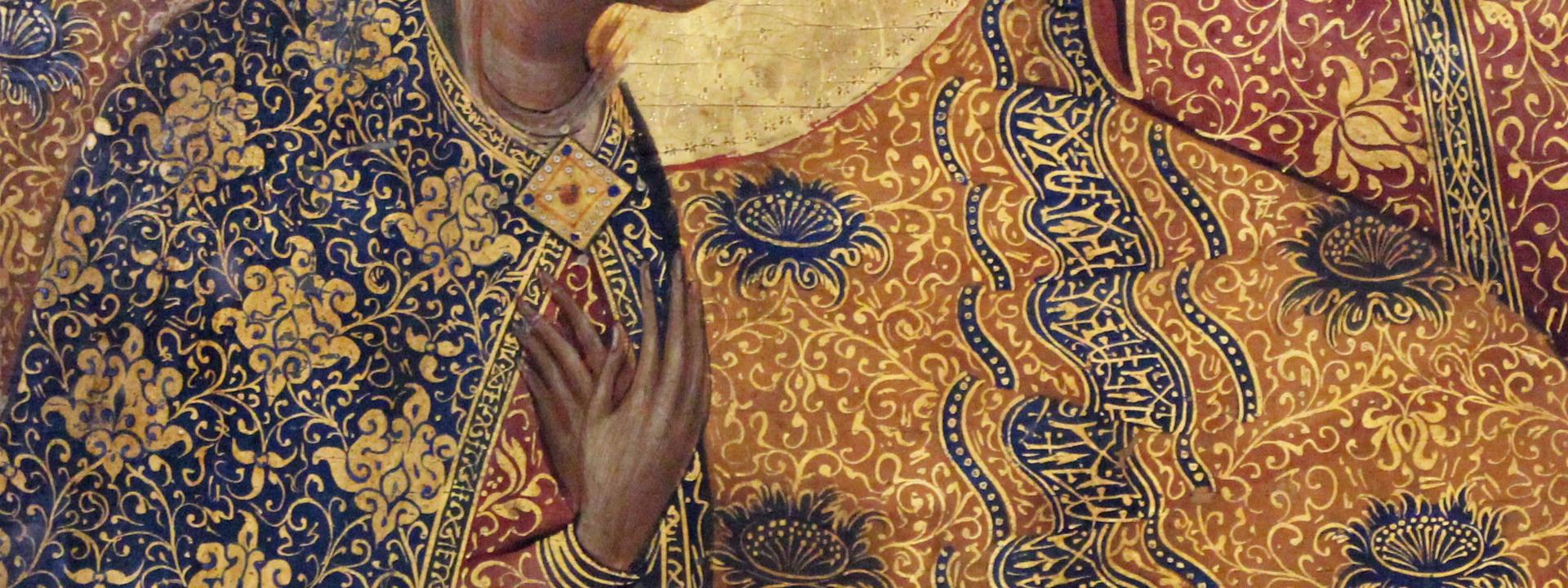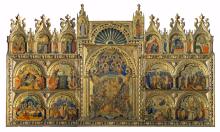Paolo Veneziano’s polyptych comes from the monastic complex of the Poor Clare nuns of Santa Chiara in Venice. The work is artistically superlative and an important example of a very specific structural typology – a multi-register polyptych, with narrative scenes placed around a central episode, all held within a sumptuously realised wooden frame with gilt intaglio carving.
The central panel contains the Coronation of the Virgin, a theme of Western origin that was very popular in Venice throughout the entire fourteenth century. The celestial event is described within an elaborately staged setting of great ornate ostentation: a large throne, surrounded by a star-filled sky, welcomes Christ and the Virgin in lavish silk drapes, while a chorus of angels playing instruments dominates the scene. The side compartments contain eight scenes with episodes from the life of Christ (Nativity and Adoration of the Magi; Baptism of Christ; Last Supper; Prayer in the Garden and the Arrest of Christ; Journey to Calvary; Crucifixion; Resurrection and Noli me tangere) while the upper section contains four episodes from the life of Saint Francis as well as the Pentecost and the Descent into Limbo.
The work was first attributed to Paolo Veneziano’s youthful production by Raimond van Marle (1924). Roberto Longhi (1946), however, moved the interpretative bar for the polyptych by seeing in it a sort of post-mid-century nostalgic Byzantine revival by Veronese. This authoritative opinion, which heavily influenced ensuing studies and the perception of the created object as a belated figurative expression, has been reexamined by more recent scholarship, which tends to reposition the work in an intermediate period between the 1333 fragmentary polyptych in Vicenza and the 1345 Pala Feriale. There is also a technical aspect that would bring the polyptych’s date forward. Roberta Salvador (2006–2007) has underlined how, from the 1349 Chioggia polyptych on, Paolo Veneziano uses a specific stamp to define the three points that surround the decorative racemes of the halos, while in earlier works this motif seems to have been done by hand. The fact that this stamp was not used for the painting in the Gallerie dell’Accademia would place the work to before 1349.

